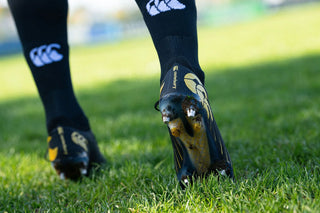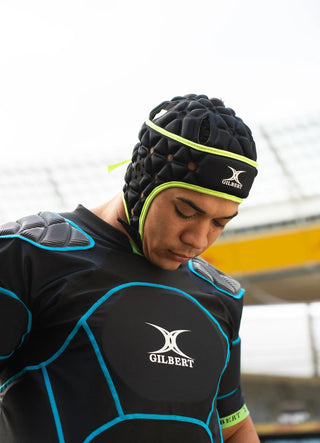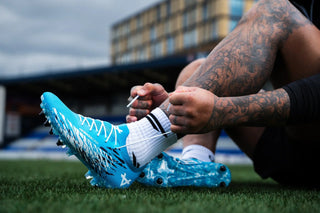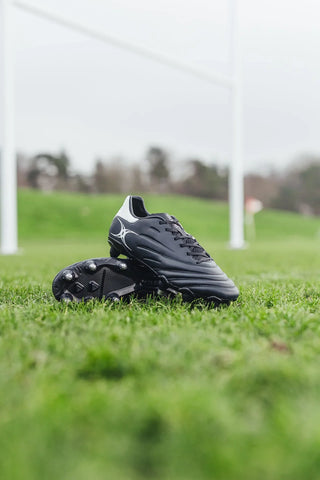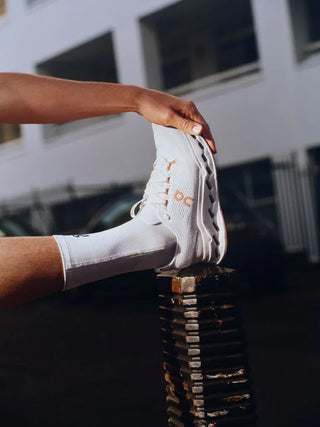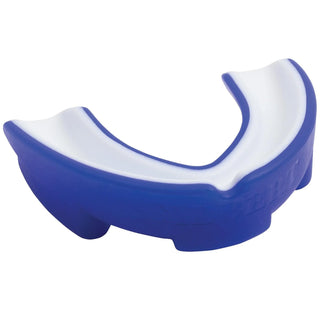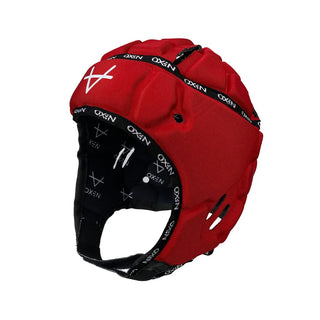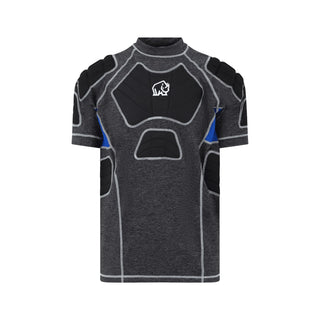So you've bought some new protective gear
Your protective equipment is just as important as your boots when it comes to safety and performance. Headguards, mouthguards, and body armour all take a lot of impact during training and matches, so making sure they fit correctly and are looked after properly ensures they do their job effectively.
In this guide, you’ll find simple steps on:
- Fitting tips to make sure your headguard, mouthguard, and body armour stay secure and comfortable.
- Cleaning and storing your gear to prevent wear, odour, and bacteria build-up.
- Knowing when to replace equipment so your protection is always at its best.
Whether you’re new to the game or a seasoned player, following these fitting and care tips will help you stay protected and get the most out of your equipment every season.
Looking after your body armour & headguard
By following these care tips, you can ensure that your rugby body armour lasts as long as possible while providing you with the protection you need on the field. Remember to always follow the manufacturer's instructions for care and maintenance, and replace any damaged or worn armour as necessary.
Cleaning
After each use, wipe it down with a damp cloth to remove any sweat or dirt. Avoid using harsh chemicals or abrasive materials, as this can cause damage.
Drying
Allow it to air dry completely before storing it away. Avoid using a tumble dryer, as this can cause shrinkage or damage the padding.
Storage
Store your gear in a cool, dry place away from direct sunlight. Avoid leaving it crumpled or folded for extended periods, as this can damage the padding and shape.
Maintenance
Check the stitching and padding regularly. If there are any tears or damage, repair them as soon as possible to maintain the integrity.
Washing
Follow the manufacturer's instructions for washing. Some may be machine washable, while others may require hand washing. Use a mild detergent and avoid using bleach or fabric softener.
Protection
Keep it protected during transport to and from matches and training sessions. Use a gear bag or backpack to prevent any damage during transit.
Looking after your Mouthguard
By following these care tips, you can ensure that your mouthguard lasts as long as possible while providing you with the protection you need on the field. Remember to always follow the manufacturer's instructions for care and maintenance, and replace any damaged or worn mouthguards as necessary.
Cleaning
After each use, rinse the mouthguard with cold water to remove any saliva or debris. Brush the mouthguard gently with a toothbrush and mild soap, then rinse thoroughly with cold water.
Drying
Allow the mouthguard to air dry completely before storing it away. Avoid using hot air or a dryer, as this can cause the mouthguard to warp or lose its shape.
Storage
Store your mouthguard in a case, in a cool, dry place away from direct sunlight.
Maintenance
Inspect your mouthguard regularly for signs of wear or damage. If there are any cracks or damage, replace the mouthguard as soon as possible to ensure adequate protection.
Replacement
Replace your mouthguard at least once a year, or more frequently if it becomes worn or damaged. A damaged or worn mouthguard may not provide adequate protection and can put you at risk of injury.
Protection
Keep your mouthguard protected during transport to and from matches and training sessions. Use a case or pouch to prevent any damage during transit.
Fitment
Check the fit of your mouthguard regularly. If it becomes loose or uncomfortable, it would be worth remoulding it if possible or consider getting a new one.


